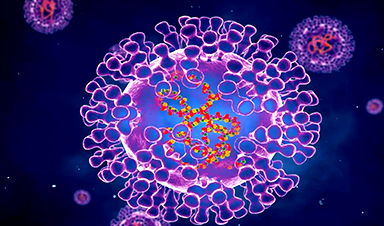No longer contained to a single continent or found only among travelers, the monkeypox virus is undergoing community transmission in dozens of countries worldwide and spreading unchecked at an alarming rate. This is especially dangerous for the immunocompromised, pregnant women and young children. They all have a hospitalization and death rate from the virus that is much higher than that of healthy adults.
Yet despite the growing number of cases, the World Health Organization has largely played down the outbreak. On June 24, the agency failed to declare a public health emergency — just as it repeatedly failed to issue emergency and pandemic declarations for the coronavirus, until finally declaring a pandemic in March in 2020.
Historically found in West and Central Africa, the monkeypox virus began to spread internationally in early May, when the United Kingdom announced its first confirmed positive case. The global reaction since then has been incredibly slow. Case counts seem low relative to covid-19, and the world appears to be lulled into complacency, like a frog in gradually heating water. Today, the virus has spread across more than 70 countries on six continents with no sign of abatement. According to the WHO itself, cases have tripled in Europe in the past two weeks. We need to wake up to the fact that we are already in a boiling pot.
The available European data show that most infections have occurred in men who have sex with men (MSM), who are generally young adults. However, there are reported cases among household members, heterosexual contacts and nonsexual contacts, as well as children. About 10 percent of patients have been hospitalized for treatment or for isolation, and there has been one ICU admission.
Given the early predominance of cases in the MSM community, many countries are not testing others with monkeypox symptoms, leading to a risk of distorted infection numbers and wider uncontrolled spread — which in turn leads to a risk of many more individuals becoming infected with severe cases.
A new study also suggests that the virus might be mutating 12 times faster than expected, and could lead to 60,000 new cases per day in the U.K. alone by the end of 2022. Other models suggest that we could conceivably see 100,000 cases worldwide by August and 500,000 to 1 million cases by the end of September.
The WHO was created with the vision of coordinating global efforts to promote health and keep the world safe, precisely what we currently need. Health-care workers and front line personnel are in critically short supply, and there is inadequate conversation regarding targeted prevention. By not preemptively raising the alarm, the WHO is putting countless lives at stake — just as the delay in classifying covid-19 played a critical role in the failure to control that virus’s global explosion effectively.
We must enlist the full spectrum of prevention and diagnostics to curb the spread, preclude the development of local disease reservoirs in rodents, and prevent suffering and possible death, especially in the immunocompromised, pregnant people and young children.
Governments and health authorities worldwide should alert the public regarding protection measures and provide support for mitigation, rapid case identification, early diagnostics, contact tracing and isolation. While a reliable monkeypox vaccine exists due to prior research, it will take many months to ramp up production for the world.
Here in the United States, the federal government has already ordered 1.6 million doses for 800,000 Americans, but these will not be available until the end of 2022. By then, it will be too late unless we act now with other containment measures. The Centers for Disease Control and Prevention needs to lead by example and encourage science-based precautionary measures to protect Americans.
We at the World Health Network have taken action to issue an early warning. On June 22, we declared monkeypox a pandemic emergency and released public health guidance for steps to curb the spread. We invite the WHO to join us and are hopeful it will reconsider and act soon. WHO Director General Tedros Adhanom Ghebreyesus has recently acknowledged monkeypox’s growing threat.
We should all refuse to walk blindly, allowing the present to become prologue to greater catastrophe. Global health officials must advocate for and enact a unified, coherent approach to fighting the monkeypox pandemic before it reaches the proportions of covid-19. If we act, guided by the lessons of the past two years, we can avoid the mistakes that cost the world millions of lives.
News
Nerve Damage Can Disrupt Immunity Across the Entire Body
A single nerve injury can quietly reshape the immune system across the entire body. Preclinical research from McGill University suggests that nerve injuries may lead to long-lasting changes in the immune system, and these [...]
Fake Science Is Growing Faster Than Legitimate Research, New Study Warns
New research reveals organized networks linking paper mills, intermediaries, and compromised academic journals Organized scientific fraud is becoming increasingly common, ranging from fabricated research to the buying and selling of authorship and citations, according [...]
Scientists Unlock a New Way to Hear the Brain’s Hidden Language
Scientists can finally hear the brain’s quietest messages—unlocking the hidden code behind how neurons think, decide, and remember. Scientists have created a new protein that can capture the incoming chemical signals received by brain [...]
Does being infected or vaccinated first influence COVID-19 immunity?
A new study analyzing the immune response to COVID-19 in a Catalan cohort of health workers sheds light on an important question: does it matter whether a person was first infected or first vaccinated? [...]
We May Never Know if AI Is Conscious, Says Cambridge Philosopher
As claims about conscious AI grow louder, a Cambridge philosopher argues that we lack the evidence to know whether machines can truly be conscious, let alone morally significant. A philosopher at the University of [...]
AI Helped Scientists Stop a Virus With One Tiny Change
Using AI, researchers identified one tiny molecular interaction that viruses need to infect cells. Disrupting it stopped the virus before infection could begin. Washington State University scientists have uncovered a method to interfere with a key [...]
Deadly Hospital Fungus May Finally Have a Weakness
A deadly, drug-resistant hospital fungus may finally have a weakness—and scientists think they’ve found it. Researchers have identified a genetic process that could open the door to new treatments for a dangerous fungal infection [...]
Fever-Proof Bird Flu Variant Could Fuel the Next Pandemic
Bird flu viruses present a significant risk to humans because they can continue replicating at temperatures higher than a typical fever. Fever is one of the body’s main tools for slowing or stopping viral [...]
What could the future of nanoscience look like?
Society has a lot to thank for nanoscience. From improved health monitoring to reducing the size of electronics, scientists’ ability to delve deeper and better understand chemistry at the nanoscale has opened up numerous [...]
Scientists Melt Cancer’s Hidden “Power Hubs” and Stop Tumor Growth
Researchers discovered that in a rare kidney cancer, RNA builds droplet-like hubs that act as growth control centers inside tumor cells. By engineering a molecular switch to dissolve these hubs, they were able to halt cancer [...]
Platelet-inspired nanoparticles could improve treatment of inflammatory diseases
Scientists have developed platelet-inspired nanoparticles that deliver anti-inflammatory drugs directly to brain-computer interface implants, doubling their effectiveness. Scientists have found a way to improve the performance of brain-computer interface (BCI) electrodes by delivering anti-inflammatory drugs directly [...]
After 150 years, a new chapter in cancer therapy is finally beginning
For decades, researchers have been looking for ways to destroy cancer cells in a targeted manner without further weakening the body. But for many patients whose immune system is severely impaired by chemotherapy or radiation, [...]
Older chemical libraries show promise for fighting resistant strains of COVID-19 virus
SARS‑CoV‑2, the virus that causes COVID-19, continues to mutate, with some newer strains becoming less responsive to current antiviral treatments like Paxlovid. Now, University of California San Diego scientists and an international team of [...]
Lower doses of immunotherapy for skin cancer give better results, study suggests
According to a new study, lower doses of approved immunotherapy for malignant melanoma can give better results against tumors, while reducing side effects. This is reported by researchers at Karolinska Institutet in the Journal of the National [...]
Researchers highlight five pathways through which microplastics can harm the brain
Microplastics could be fueling neurodegenerative diseases like Alzheimer's and Parkinson's, with a new study highlighting five ways microplastics can trigger inflammation and damage in the brain. More than 57 million people live with dementia, [...]
Tiny Metal Nanodots Obliterate Cancer Cells While Largely Sparing Healthy Tissue
Scientists have developed tiny metal-oxide particles that push cancer cells past their stress limits while sparing healthy tissue. An international team led by RMIT University has developed tiny particles called nanodots, crafted from a metallic compound, [...]






















